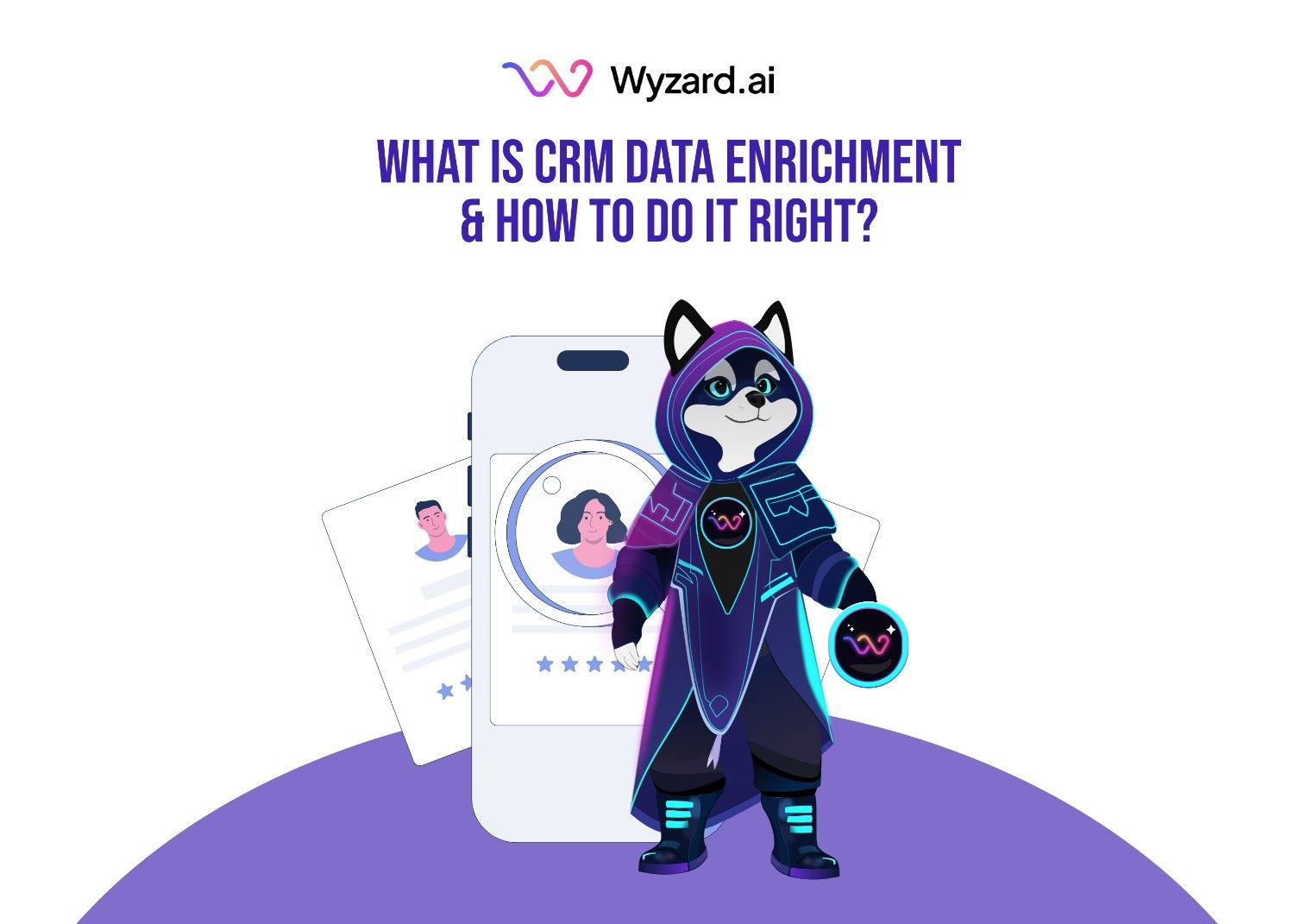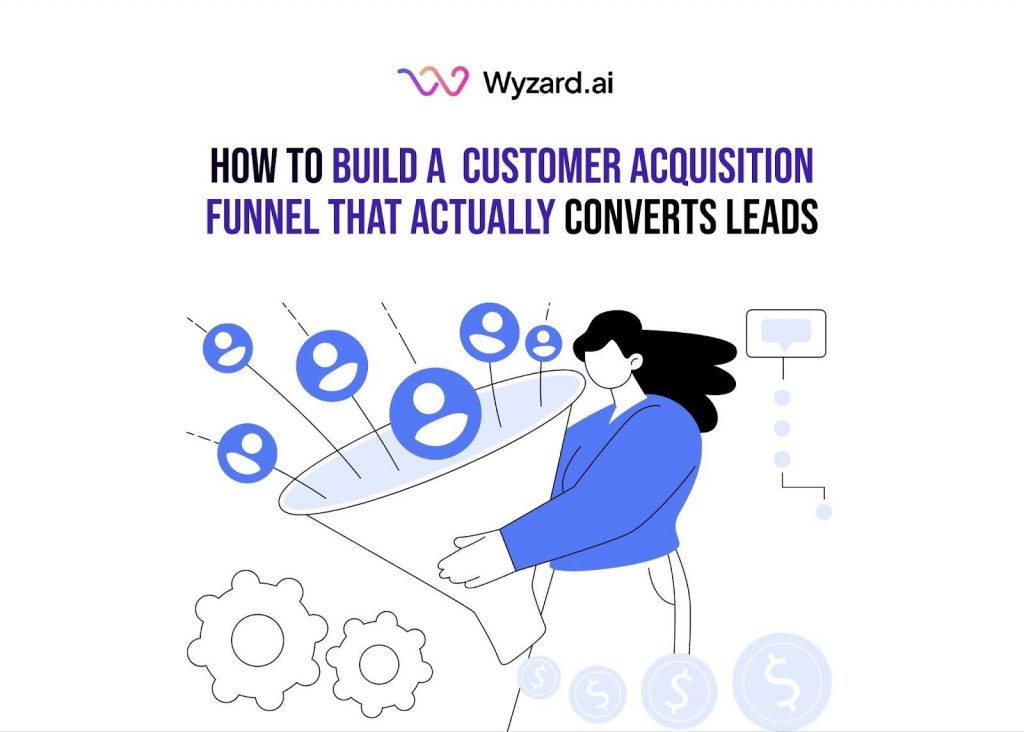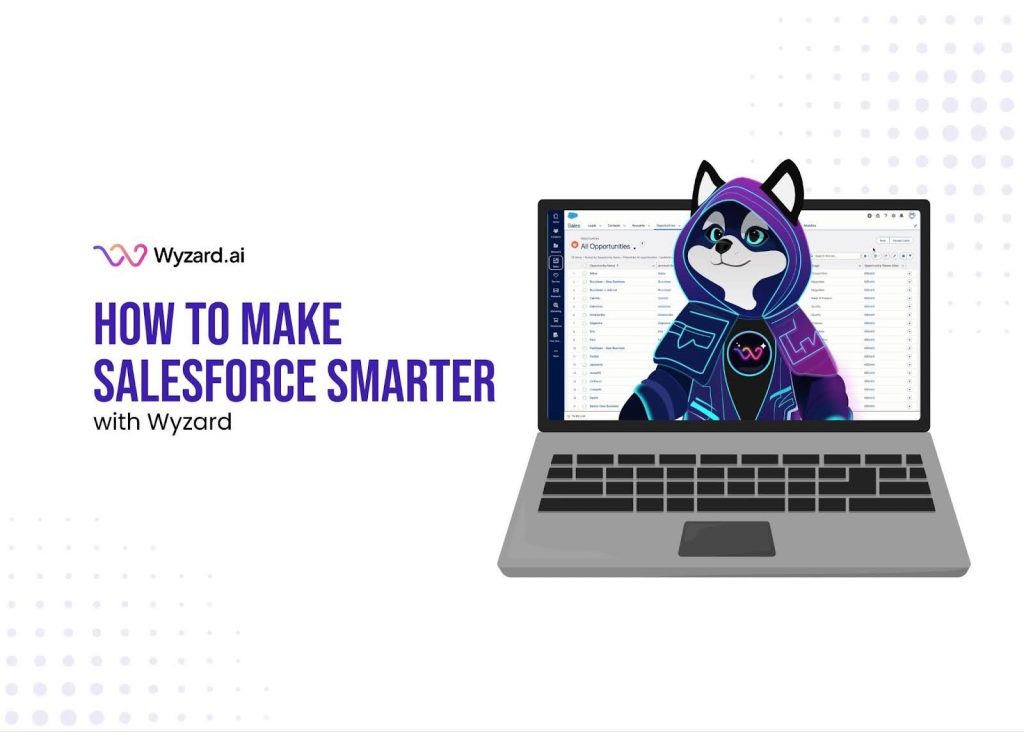You're generating traffic. Leads are visiting your website. But conversions? They're barely moving the needle. The problem isn't your ...
What Is CRM Data Enrichment and How To Do It Right?


Subscribe Now
Your database is packed with leads. But here’s the catch: most of them are sitting there with nothing more than a name and email. You want to reach out, but you don’t know their role, company size, or what problem keeps them up at night. Sound familiar?
That’s where CRM data enrichment changes everything. It transforms basic contact records into a goldmine of actionable insights, including job titles, firmographics, technographics, behavioral data, and more. This isn’t just about having more information; it’s about having the right information. It’s about capturing buyer signals the moment they happen and turning them into real revenue opportunities.
What Is CRM Data Enrichment?
CRM data enrichment is the process of enhancing and updating your existing customer relationship management data by layering on additional information from internal and external sources. Think of it as filling in the gaps, adding phone numbers, LinkedIn profiles, company revenue, tech stack details, and behavioral signals to your bare-bones contact records.
Here’s what it does:
- Completes missing details: Adds phone numbers, social profiles, and job titles
- Corrects outdated information: Ensures your data stays accurate and current
- Adds context: Pulls in firmographic, technographic, and intent data
- Improves segmentation: Helps you target the right people with the right message
Without enrichment, you’re working blind. With it, you can personalize outreach, prioritize high-value leads, and speed up your sales cycle, all without adding headcount.
Why CRM Data Enrichment Matters for GTM Teams
For mid-market and growth-stage SaaS teams, the stakes are high. You’re expected to drive pipeline, close deals faster, and do it all without ballooning your team. That’s a tall order when your CRM is full of incomplete or stale data.
Better lead qualification: Know who’s ready to buy based on firmographics, tech stack, and intent signals
Faster sales cycles: Arm your reps with the right context before the first call
Personalized campaigns: Deliver messages that actually resonate based on real data
Higher conversion rates: Focus on leads that match your ideal customer profile
Reduced manual work: Automate data collection instead of asking reps to hunt for information
Here’s what proper contact enrichment unlocks:
According to research from Gartner, poor data quality costs organizations an average of $12.9 million per year. Enrichment helps you avoid that trap by keeping your CRM clean, current, and complete.
Types of Data You Can Enrich in Your CRM
Not all data enrichment is the same. Depending on your goals, you’ll want to layer in different types of information. Here’s what’s available:
| Data Type | What It Includes | Why It Matters |
| Firmographic Data | Company size, industry, revenue, and location | Helps you qualify accounts and prioritize high-value targets |
| Technographic Data | Software stack, tools in use, tech spend | Shows buying intent and helps you position solutions effectively |
| Demographic Data | Job title, seniority, department | Ensures you’re reaching the right decision-maker |
| Behavioral Data | Website visits, content downloads, and email engagement | Captures buyer signals in real time |
| Contact Data | Phone numbers, email addresses, LinkedIn profiles | Enables multi-channel outreach |
Marketing data enrichment goes beyond just filling in blanks. It gives you the intelligence to act fast when a signal appears, whether that’s a website visit, a job change, or a tech stack update.
How To Do CRM Data Enrichment Right
Getting CRM data enrichment right isn’t about dumping more data into your system. It’s about strategic, automated, and continuous improvement of your records. Here’s how to approach it:
Define Your Goals Before You Start
Before you enrich anything, get clear on what you’re trying to achieve. Are you trying to improve lead scoring? Personalize campaigns? Speed up sales cycles? Your goals will dictate which data points matter most.
For example, if your goal is automating lead qualification, focus on firmographic and intent data. If it’s personalization, prioritize behavioral and technographic insights.
Use Multiple Data Sources
Relying on a single data provider is a mistake. One source might have strong firmographic data but weak contact information. Another might excel at intent signals but lack technographic depth.
The best CRM data enrichment tools pull from multiple providers, automatically checking one source after another until they find what you need. This approach, often called waterfall enrichment, maximizes coverage while controlling costs.
Automate Data Entry and Updates
Manual data entry is slow, error-prone, and a waste of your team’s time. Automation ensures your CRM stays enriched without anyone lifting a finger.
Set up workflows that:
- Enrich new contacts as soon as they enter your CRM
- Update records when job changes or company data shifts
- Flag incomplete or outdated information for review
This keeps your data fresh and your team focused on selling, not data entry.
Monitor and Analyze Data Quality
Enrichment isn’t a one-and-done task. Data decays fast, contacts change jobs, companies get acquired, and tech stacks evolve. Schedule regular audits to catch errors, fill gaps, and remove duplicates.
Track metrics like:
- Completeness rate (percentage of fields filled)
- Accuracy rate (percentage of verified data)
- Decay rate (how fast data becomes outdated)
If you’re seeing high decay, it’s time to tighten your enrichment cadence.
Leverage Customer Feedback
Your customers are a goldmine of accurate data. Use forms, surveys, and direct conversations to verify and update information. This also gives you qualitative insights that third-party providers can’t offer.
Implement Data Standardization
Inconsistent formatting creates chaos. “CEO,” “Chief Executive Officer,” and “Founder & CEO” might all refer to the same role, but your CRM will treat them as different entries.
Standardize formats for:
- Job titles
- Company names
- Locations
- Phone numbers
This makes your data easier to segment, analyze, and act on.
Data Enrichment Best Practices You Can’t Ignore
Even with the right approach, there are pitfalls to avoid. Follow these data enrichment best practices to stay on track:
- Start with clean data: Enrichment won’t fix a messy database. Deduplicate and standardize before you enrich.
- Prioritize accuracy over volume: More data isn’t better if it’s wrong. Quality beats quantity every time.
- Respect privacy laws: Make sure your enrichment process complies with GDPR, CCPA, and other regulations.
- Integrate with your tech stack: Your CRM should sync seamlessly with your marketing automation, sales engagement, and analytics tools.
- Test and iterate: Run small tests to see which data points improve performance, then scale what works.
Best CRM Data Enrichment Tools To Consider
Choosing the right contact enrichment tools can make or break your strategy. Here are a few options worth exploring:
Wyzard.ai: Captures buyer signals across multiple channels and connects them directly to your CRM. It orchestrates GTM actions in real time, ensuring no intent signal goes unnoticed. Perfect for teams that need to act fast when a prospect shows interest.
Clearbit: Offers firmographic and technographic data with strong coverage in North America. Integrates well with most CRMs.
ZoomInfo: Known for deep contact and company data. Best for teams focused on outbound prospecting.
Clay: Aggregates data from dozens of sources with waterfall enrichment. Great for teams that want maximum coverage.
Lusha: Specializes in contact data, including phone numbers and email addresses. Simple and affordable for smaller teams.
Each tool has strengths. Pick based on your data needs, budget, and integration requirements.
Common Mistakes To Avoid
Even with the best CRM data enrichment tools, mistakes happen. Watch out for these:
- Over-enriching: Adding data you’ll never use just bloats your CRM. Focus on what drives decisions.
- Ignoring data decay: Enrichment isn’t one-time. Set up automated updates to keep data current.
- Skipping validation: Not all enriched data is accurate. Validate critical fields before using them in campaigns.
- Forgetting the human touch: Automation is great, but customer conversations still matter. Use enrichment to guide outreach, not replace it.
How Wyzard.ai Turns Enriched Data Into Revenue
Enriched data is only valuable if you act on it. That’s where Wyzard.ai comes in. It doesn’t just sit on top of your CRM; it captures buyer signals across your entire tech stack and triggers automated, human-supervised follow-ups the moment a prospect shows intent.
Here’s how it works:
Signal capture: Wyzard.ai monitors website visits, email opens, content downloads, and more
Signal orchestration: It connects those signals across tools and channels, building a complete picture of buyer intent
Automated action: When a signal hits, Wyzard.ai triggers the right follow-up, email, InMail, or CRM task, without delay
The result? Every buying moment becomes a revenue opportunity. No more lost signals. No more delayed follow-ups. Just timely, relevant engagement when it matters most.
Final Thoughts
CRM data enrichment isn’t optional anymore. It’s the foundation of effective lead qualification, personalized outreach, and efficient pipeline management. Done right, it turns incomplete contact records into a strategic asset that drives real results.
The key is to be intentional, know your goals, automate smartly, and choose the right tools for your team. And when you pair enriched data with a platform like Wyzard.ai that captures and acts on buyer signals in real time, you’re not just improving your CRM. You’re building a revenue engine that scales without adding headcount.
Ready to stop losing buyer intent and start turning signals into revenue? That’s the power of enrichment done right.
FAQs
Regular data entry is manual; someone types information into your CRM field by field. CRM data enrichment automates this process by pulling data from multiple external sources and updating records instantly. Instead of your team spending hours researching prospects, enrichment tools fill in missing details like job titles, company size, tech stack, and contact information automatically. This saves time, reduces errors, and keeps your database current without adding headcount.
CRM data should be enriched continuously, not just once. Contact information changes fast, people switch jobs, companies grow, and tech stacks evolve. Set up automated workflows that enrich new contacts as they enter your system and refresh existing records every 30-90 days. The exact frequency depends on your sales cycle and how quickly your target market changes. For fast-moving SaaS teams, quarterly updates are a smart baseline to prevent data decay.
Yes. Wyzard.ai goes beyond basic contact enrichment by capturing buyer signals in real time across your entire GTM stack, website visits, email engagement, content downloads, and more. It automatically enriches your CRM with behavioral and intent data, then orchestrates immediate follow-ups when a prospect shows buying interest. This means you’re not just enriching records, you’re turning those signals into revenue opportunities the moment they happen, without manual intervention.
When done correctly, yes. Reputable CRM data enrichment tools source information from publicly available and legally compliant databases. However, it’s your responsibility to ensure any enrichment provider you use follows GDPR, CCPA, and other regional privacy laws. Always verify that enriched data is collected with proper consent, and give contacts the option to update or remove their information. Work with vendors who are transparent about their data sources and compliance practices.
The ROI shows up in three areas: time savings, conversion rates, and pipeline efficiency. Enriched data also improves lead qualification accuracy, resulting in higher conversion rates and shorter sales cycles. According to industry data, poor data quality costs organizations millions annually, enrichment prevents that loss while increasing the value of every contact in your database without scaling headcount.
Other blogs
The latest industry news, interviews, technologies, and resources.
How to Make Salesforce Smarter with Wyzard.ai
Your CRM is packed with contacts, but how many buying signals are you missing right now? A prospect just ...

Unlock Real-Time HubSpot Automation with Wyzard.ai
Your HubSpot portal holds valuable data about every lead, deal, and customer interaction. But if you're waiting hours, or ...

 We’ve secured funding to power Signal-to-Revenue AI to GTM teams globally. →
We’ve secured funding to power Signal-to-Revenue AI to GTM teams globally. →


